A country steeped in history dating back to ancient times, Albania has witnessed countless battles throughout history. So here in Albania you can be sure to find spectacular castles – from ancient to medieval fortresses. Scattered across the country, most of them are linked to history, and some of them live to this day. Here is a list with pictures of the most famous castles in Albania.
Rozafa Castle (Shkodra Castle)
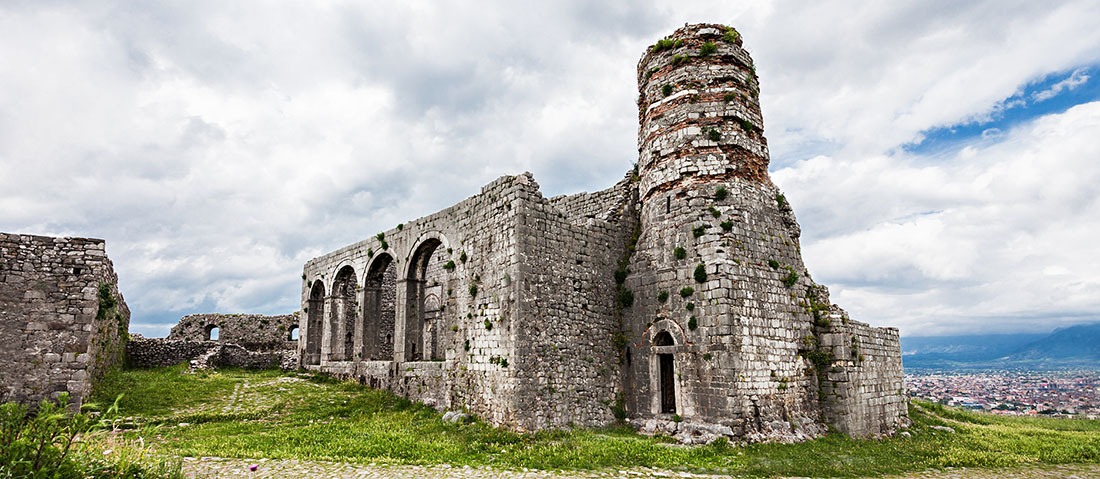
Rozafa Castle in Shkoder, Albania. It dates back to antiquity as an Illyrian fortress.
Rozafa Castle (or Shkodra Castle) is situated on a rocky hill in the western part of Shkodra, Albania. The waters of three rivers: Buna, Drini and Kiri bathed the city of Shkodra. Rozafa is one of the most important castles in Albania and the main tourist attraction of Shkodra city.
Rozafa Castle is of Illyrian origin. Titus Livy, a famous historian, called it “the strongest land of Labeati “.
Rosaph’s name comes from the Middle Ages. This name is associated with a legend that speaks of the so-called ” devil – observance of this word”. According to legend, it is the wall of Rosafa, the youngest bride of the three brothers, who builds the castle walls during the day and destroys the walls at night.
At the entrance to the castle there is a bass relay Rozafa. The limestone water that flows in the main entrance is Rosafa’s mother’s milk, which according to folk tradition was left open to feed the baby.
The castle’s modern look was given by the feudal Balshays family during their reign in the 14th century.
Today most of the remains of the castle date from the Venetian period. However, the Ottoman occupation also made him sing. The walls of Rozafa Castle are 880 m long and 9,000 m2 in size.
The Ottomans occupied Rozafa Castle in 1479 after strong resistance. Other buildings founded inside the castle are 15th-century water cisterns, the 13th-century cathedral, which was returned to the mosque after the Ottoman occupation. Also in the castle is the Rosafa Museum, which explains all the eras that the castle had to go through.
Lezhan Castle
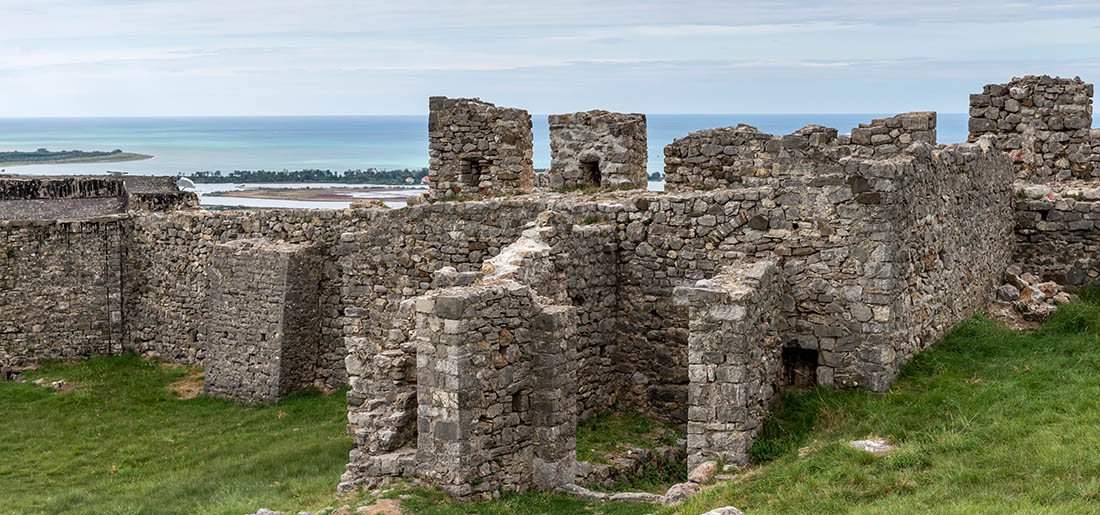
Lezhan Castle in the city of Lezha. The castle dates from Illyrian times.
Leja Castle is another of the many castles in Albania. It is located on a 186 m high hill in the eastern part of the city. The origin of the castle is Illyrian. In 1440 the castle was rebuilt by the Venetians, and in 1522, after the Ottoman occupation, it was also rebuilt by them. Here you will find the remains of Illyrians, Romans, Byzantines and Ottomans. The most interesting sights are the ruins of Ottoman buildings inside the castle, mosques and towers in the south-east wall with a Roman arch and an Illyrian tower in the south wall of the castle. Leżany Castle is a cultural monument. From there you can see the beautiful landscape of Lez and the Adriatic Sea.
Castle Kruisky

Kruje Castle is located in Kruje, Albania. It was the center of Skanderbeg’s rebellion against the Ottoman Empire .
This is the main tourist attraction of Kruja town. The castle was built in the V-VI centuries. The castle has an elliptical shape with a circumference of 804 m. The surrounding walls are fortified with 9 towers. In the highest part of the castle, the north-eastern part, the watchtower was built, which served to monitor and signal Petrel and Durres castles. The museum is located at the main entrance of the castle, which opened in 1982.
In addition to the stands reporting on Skanderbeg’s activities, the museum also has a bookshop, documents and publications related to Skanderbeg’s personality. The museum has a commemorative character with elements such as stone arches, stained glass. etc. Within the castle walls are houses and a small mosque called Dollmase. In the western part of the castle there is also a ham from the XV century.
Tyrannical Fortress
Justinian Fortress or simply known as Tirana Castle is a castle in Tirana, Albania. Its history dates back to 1300 and is a relic of the Byzantine era. The fortress is the place where the main east-west and north-south roads crossed, forming the heart of Tirana.
The current fortress has three famous towers and is being restored for tourist purposes. Within the fortified walls of the former fortress there are many buildings that can be visited, including restaurants, hotels, cultural institutions. Above ground, almost all that remains of the fortress is a 6 meter high wall from the Ottoman period, which is overgrown with vines.
The recently unveiled foundations of the wall were included in Murat Toptani’s pedestrian street, and a mosaic dedicated to the 100th anniversary of Albania’s independence was unveiled near the Albanian Parliament. On June 10, 1973, the Tirana Castle was declared a cultural monument of the first category, and on May 15, 2008, the new paths of the Tirana Castle walls were declared a cultural monument.
Petrel Castle
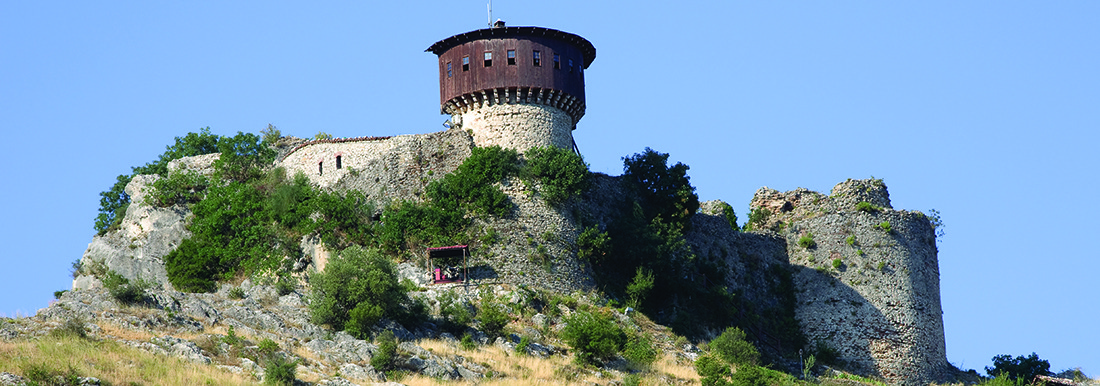
Stormbird Castle is located in Stormbird. Its history goes back to Justinian I.
The hotel is located on the Tirana – Elbsan national road, 18 km from the Albanian capital of Tirana. It is one of the main tourist centers near Tirana. The castle was built on a rocky hill above the village of the same name. It has a three-foot shape with two lookout towers. Its first building dates back to antiquity, and the present form dates from the 15th century. Petrel Castle was part of Kruja Castle’s security and alarm system. The two castles communicated with each other through an exchange of gunfire.
This castle was under the command of Skanderbeg’s sister Mamika Kastriotit. Today there are restaurants on the territory of the castles. It offers a magnificent view of the Erzeni Valley, the olive hills and the surrounding mountains.
Preza Castle
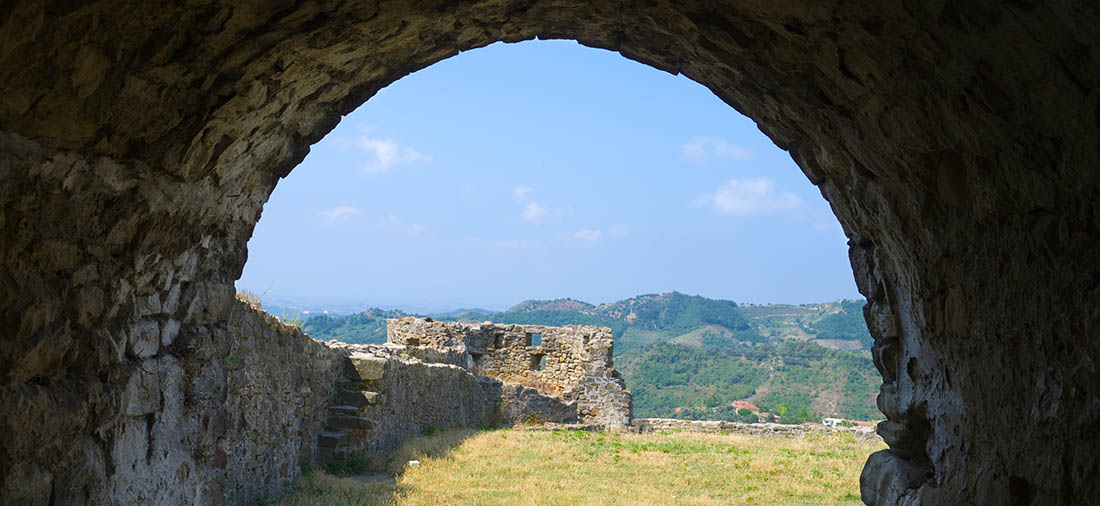
Preza Castle
Located on a hilltop above the village of the same name. This is a small castle built in the early 14th century by the region’s feudal family called Topiaive and completed in the early 15th century. The castle was declared a cultural monument. In its corners the castle has four round towers. The watchtower was built around 1800-1850. It stands out for its beautiful location overlooking the Field of Tirana. In front of the tower is also the Kruisky Castle.
This castle is located near the international airport Nene Teresa in Rinas. The castle has restaurants and service bars.
Durres Castle
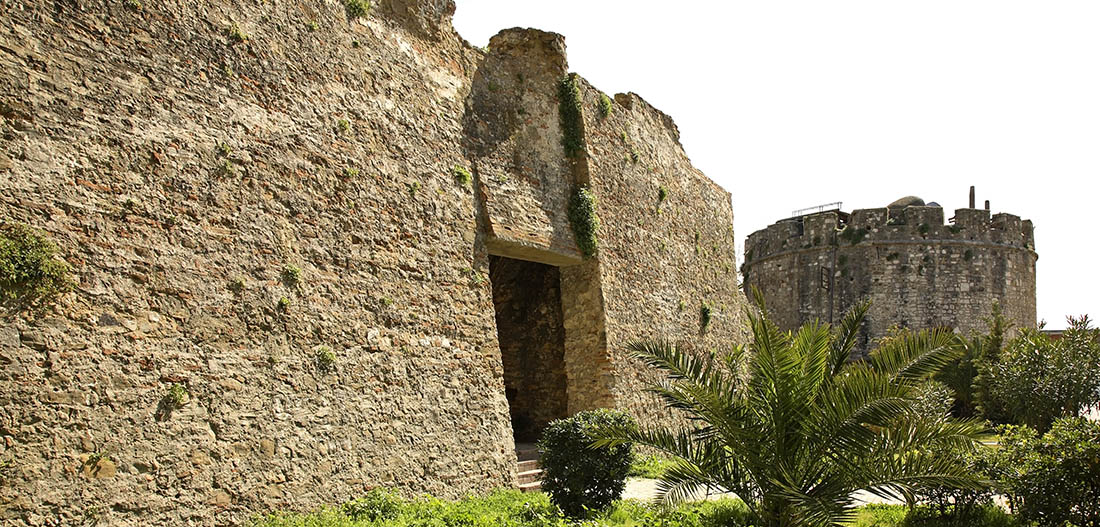
Durres Castle
Durres Castle is a 5th-century castle in Durres, Albania. The castle was built by the Emperor of the Byzantine Empire, Anastasia I, who was from Durres. At that time, Anastasia made the city one of the most fortified cities on the Adriatic. The walls were repaired after the devastating earthquake of 1273. Today, almost 4.6 meters high medieval walls and three entrances to some fortifications have been preserved on almost a third of the original length of the city castle wall.
The castle was fortified with several watchtowers by the Venetian Republic, and during the occupation of Albania by the Ottoman Empire, the wall was fortified.
The castle is now a popular attraction for Albanian tourists in Durres.
Rodon Castle

Rodon Castle
It is on Cape Rhodon. Prince Carl Topia wanted to turn this place into a shipyard, and our national Skanderbeg wanted to build a castle on a cruiser. This castle was built after the first embrace of Krui in 1452. The wall of Rodon Castle is 400 m long and at the corners – the dungeon. In 1500 the castle was conquered by the Venetians. As a result of the abrasive activity of the sea water, the castle walls have submerged in the Adriatic Sea. Today, all visitors can clearly see the outer walls on the right, ending in the dungeon. Also not far from the castle are the ruins of the Church of Shen Pietrit, considered a sacred place by the locals.
garden castle
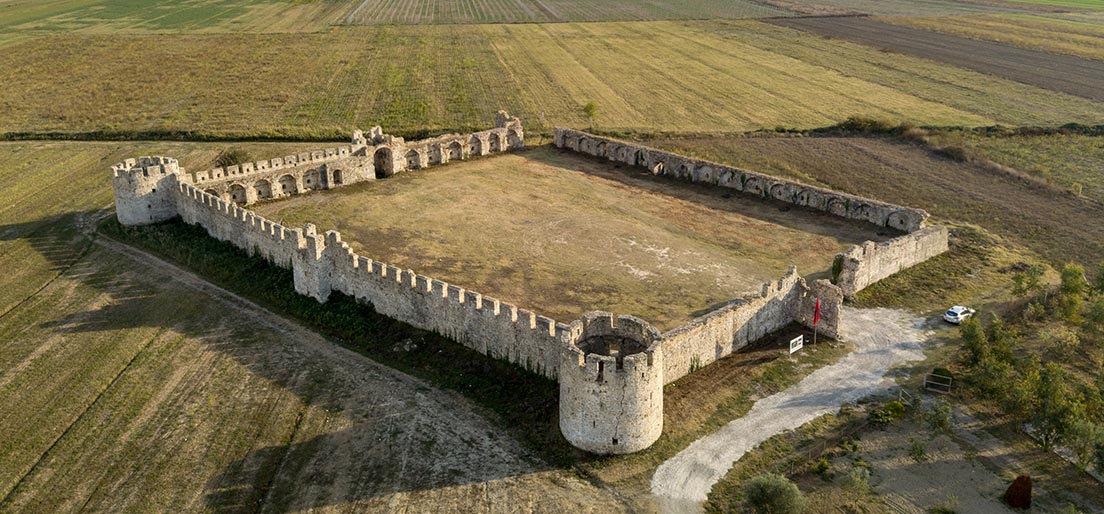
garden castle
Located near the village of Bashtova at a distance of 3-4 km in the northern part of the Shkumbinsky earpiece. The castle was built in the 15th century and was in the service of the Venetians. The Tower area is known as both an inland port and a grain export center. The chateau has a square shape and measures 60 x 90 m. The western part of the chateau was rebuilt in the 18th century. The height of the walls is 9 m.
Elbasan Castle
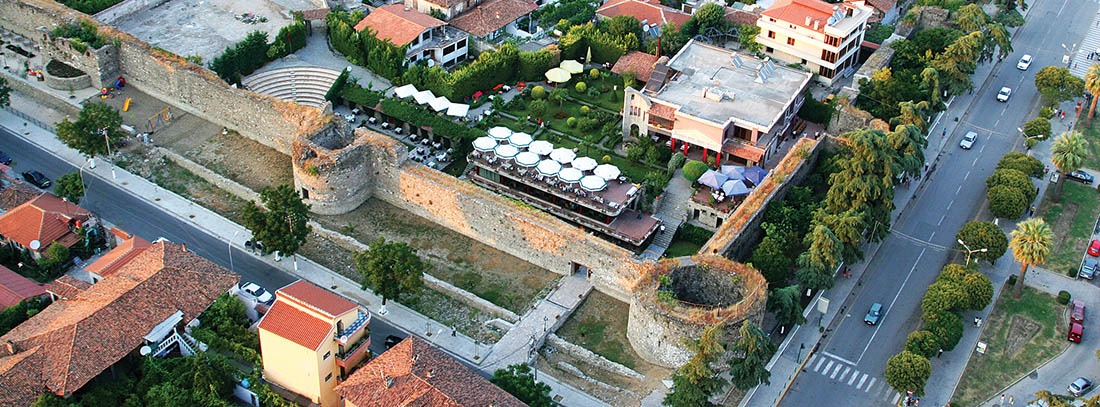
Elbasan Castle, which surrounds the town of Elbasan
This is a field castle in the city of Elbasan. He is first mentioned by Cristobel, the second historian of Mechemet. In the 18th century, the city was visited by the Ottoman chronicler Evliya Celepiu, who described the castle in detail. During the bypass of Austria, the castle became the subject of extensive studies. The Austrian archaeologists Praschniker and Schober, who visited the castle during the First World War and found that there are fortifications from ancient times under the medieval walls. The castle has a square shape with dimensions of 308 x 48 m.
Today we received only 8 towers out of 26, which were at the very beginning of their construction. In late antiquity, the city began life in the castle called Scampini as a family center on the so-called “Egnatia” street. The Turks rebuild the castle for strategic reasons. The castle is still in use today. It still contains very important religious objects of Islam and Christianity.
Castle Berat

Berat Castle is a landmark fortress in the city of Berat in Albania, perched high above the Osum River. The castle is 2,500 years old and records of its first conquest date back to 200 BC. made by the Romans. After many centuries of stone fortification, the appearance (extent) slowly increased over time during the Byzantine conquerors in the 5th, 6th and 13th centuries. centuries. The castle is currently undergoing restoration, thanks in part to its UNESCO World Heritage status. (This is a welcome “gift” for the castle’s residents who stayed on duty as the town below attracted a lot of attention.)
Many historical elements have been preserved in Berat Castle. The Mosque, the Red Mosque, recognizable by its solitary minaret (stairs inside provide access to the top), more than 20 Christian churches and the Central Museum, which houses one of the largest Orthodox churches with many 16th-century paintings. , the work of “Master Onufri”, and inside the decorative viola. Many churches in Albania were destroyed during the communist era when an “atheist state” was proclaimed during the reign of Enver Hoxha.
Other architectural elements – the courtyard, a large cistern in the center, numerous stone houses where the castle’s residents live today; This is an absolute must-do in Europe as it is one of the last ones left!
You can only reach the castle from the south. Many people who continue to live in the castle enter and exit through the southern entrance, as the north flows into the Osum River at a distance of more than 100 meters. If entering on foot, 200 meters up a steep cobbled hill from the center of Berat will help. After lunch, many castle residents prefer to take the bus, which departs from the opposite side of town, across town and back.
Gjirokastra Castle
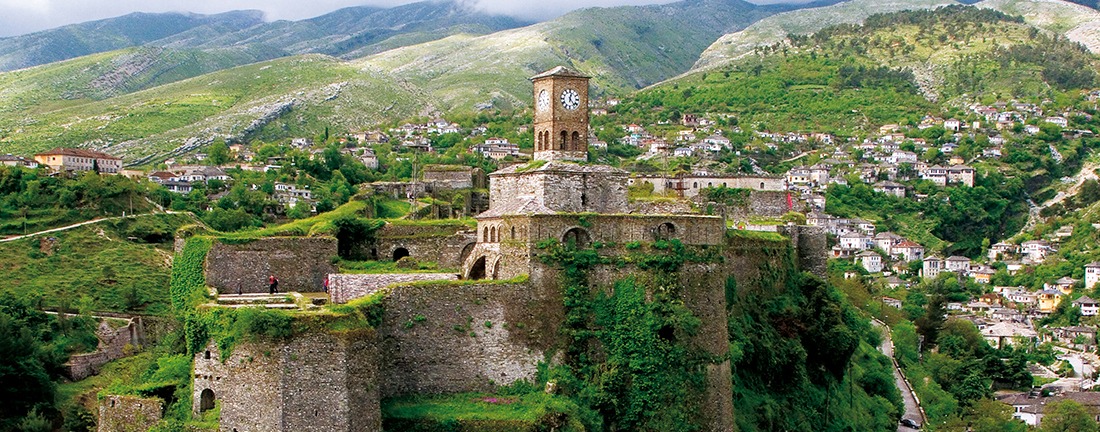
Gjirokastra Castle (Albanian: Kalaja e Gjirokastrës or Kalaja e Argjirose) is a fortress in Gjirokastra, Albania. Historically it was known as Argyrokastro, the name was then applied to the castle. Gjirokastra Castle sits at an altitude of 336 meters (1102 feet).
The castle dominates the town and overlooks a strategically important route through the river valley. Open to visitors, it contains a military museum with captured artillery and memorabilia from the communist resistance against German occupation, as well as a captured US Air Force plane honoring the communist regime’s fight against the “imperialist” western powers.
The citadel existed in various forms until the 12th century. After 1812, Ali Pasha of Tepelene added major renovations and an extension to the west. In 1932, King Zog’s government expanded the Castle Prison.
Today there are five towers and houses, a new Gjirokastra Museum, a clock tower, a church, a cistern, the stage of the National Folklore Festival and many other attractions.
The Castle Prison was used extensively by the Zoga government and housed political prisoners during the communist regime.
Ali Pasha Castle in Tepelen
Kalaja e Ali Pashës, known in Albanian, is another Ali Pasha castle in Albania. It is named after Ali Pasha of Tepelene (Ali Pasha Castle) who lived there until 1820. The current fortress was rebuilt from its surface with 3 towers in 1819. Until 1820 it was the second residence of Ali Pasha Tepelena.
The castle described and illustrated is popularly known as the Triangular Fortress. Built under Venetian rule in the late 15th or early 16th century, it became a stronghold for Venetians on Corfu to fish, graze, harvest olives and timber in and around Butrint. The castle was the center of numerous conflicts with the growing Ottoman Empire and passed from hand to hand several times. It was finally destroyed in 1798 by the retreating French army to prevent it from falling into the hands of Ali Pasha.
The fort attributed to Ali Pasha at Butrint is about 2.4 kilometers west of the mouth of the Vivari Canal. This itself began in the late 17th or early 18th century as the fortified center of the estate owned by the Corfiot family, who cultivated land on the plains south of the ancient city. Ali Pasha took control of the building around 1804 and made a number of defensive improvements, including the installation of gun batteries.
Given its small size, it is unlikely that the fort did anything more than control access from the sea to Butrint, and it cannot be compared with the more dubious forts of Ali in the Tepelen, Gjirokastra and Ioannina region.
Castle Kanin
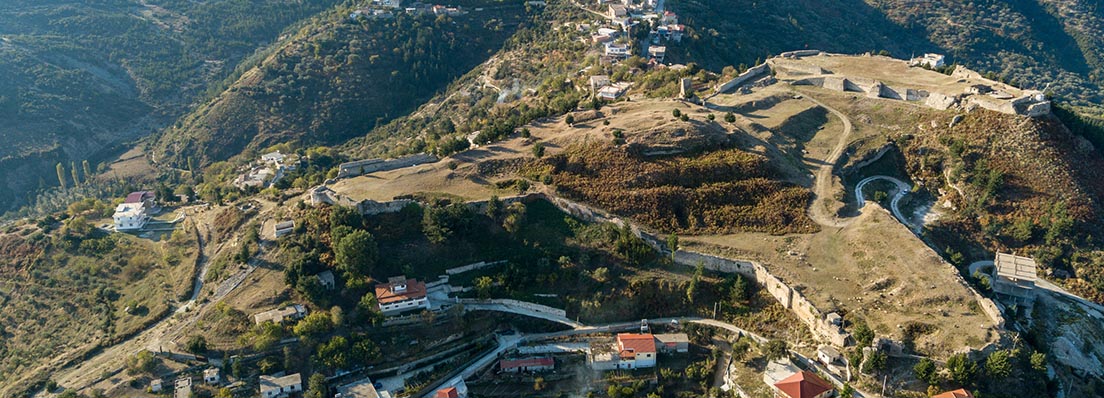
Castle Kanin
It is located 6 km from Vlorë. This castle has been mentioned since the 4th century AD, although there are signs from the Illyrian period. It is believed that the castle was built from the 3rd century BC. was built. The rear shields belong to the Byzantine, Venetian and Turkish periods. The castle was rebuilt under Justinian in the 5th century AD and then renovated by Sultan Suleiman in 1531. The castle is situated on a hill 380 m above sea level. Its area is 3600 m2. The castle offers a magnificent view of the city of Vlora.
Ali Pasha Castle in the Gulf of Porto Palermo

Ali Pasha Castle in the Gulf of Porto Palermo
It is a small castle located in a very beautiful spot on the peninsula in a small tectonic bay of Porto Palermo (old known as the Gulf of Panormes). The castle is located near the village of Keparo and has a pentagonal shape. Its dimensions are 150 x 400 m. The height of the walls is 20 m. Ali Pasha built this castle in honor of his wife Vasilikise and as a checkpoint.
Himara Castle
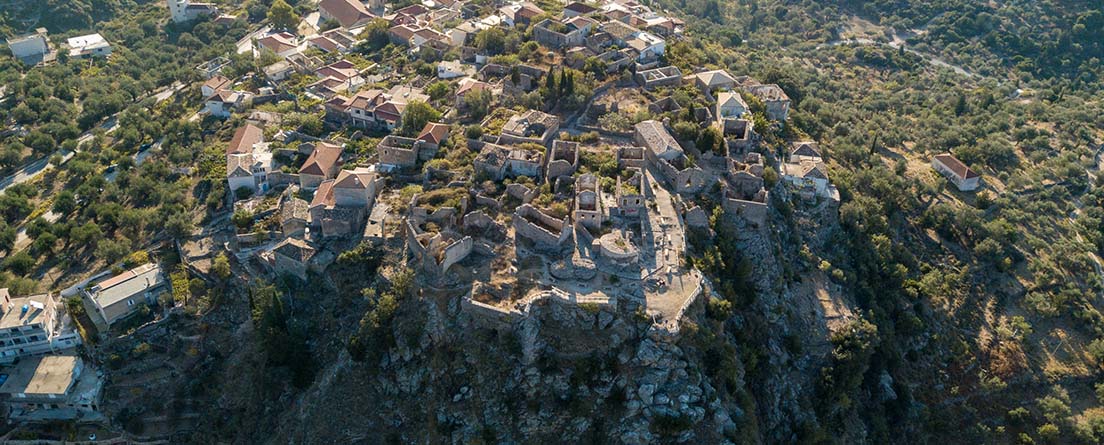
Himara Castle
It is impossible to fully get to know the southern village of Himara without visiting the place where the memory of it is kept: the Himara Castle. Beautifully surrounded by the Keraun Mountains to the north and the spectacular Ionian Sea to the south, Himara Castle offers a rare journey into Albania’s history and stunning natural surroundings.
In ancient times the city was known as Chimera. Their fortification began in the 8th century BC. and although it was rebuilt at various times, its most significant reconstruction took place in the 6th century AD, under the reign of Justinian, Emperor of the Byzantine Empire.
When the castle became the center of the Himar diocese in the 8th century, many churches were built inside and out, some of which are still standing and worth mentioning! The most famous of these is the Episcopal Church (Kisha e Episkopisë) with a beautiful sculpture of the Albanian double-headed eagle symbol on one of its gates. Click here for the map.
Borsch Castle
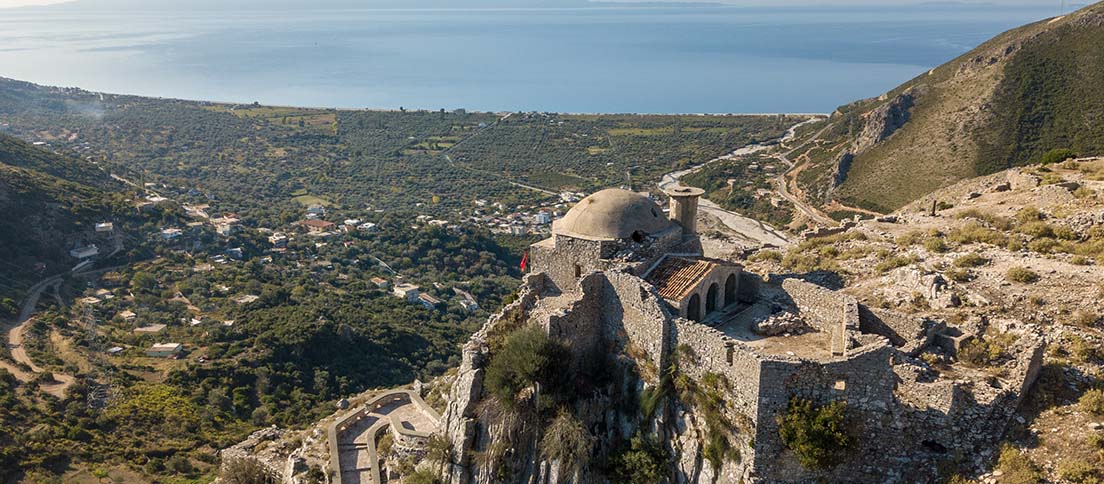
Borsch Castle, also known as Sopot Castle (Albanian: Kalaja e Sopotit), is a ruined castle near the village of Borsch, Albania. This castle is also known as Sopot Castle after the hill it is located on. It was founded in the fourth century B.C. built. Badly damaged during the barbarian invasions of the fifth and sixth centuries AD, the castle was rebuilt in the Middle Ages when it received its current name.
Lecurs Castle
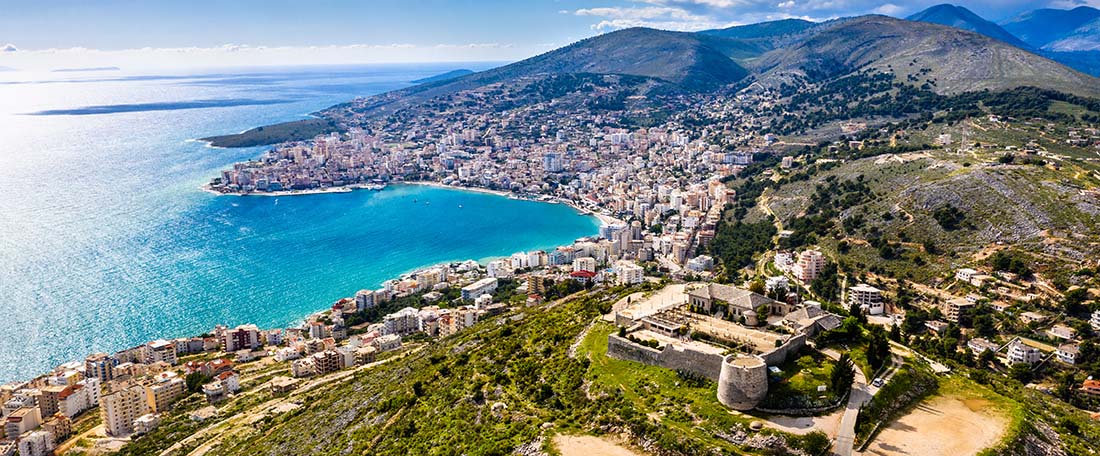
Lecurs Castle
It is 2 km in the southern part of Saranda. The castle has a square shape with towers in each corner. According to some quarries, the castle was built in 1537 by Suleiman Sultan during his invasion of Corfu island. The castle is on the highest hill which offers a beautiful view. The castle has a restaurant.
Castle Vivari Ali Pasha

Ali Pasha Vivari Castle
If you visit the famous archaeological site of Butrint, don’t forget to stop at the Vivari Castle, located at the main entrance of Butrint. The famous triangular shape of the castle is surrounded by round towers in all corners of the castle. This castle is believed to have been built in the 13th century but was rebuilt several times over the following centuries, most famously by the Venetians and Ali Pasha Tepelena. This is one of the smallest of the famous Tepelena castles scattered throughout the south. However, this fortress has a certain Venetian charm worth seeing.